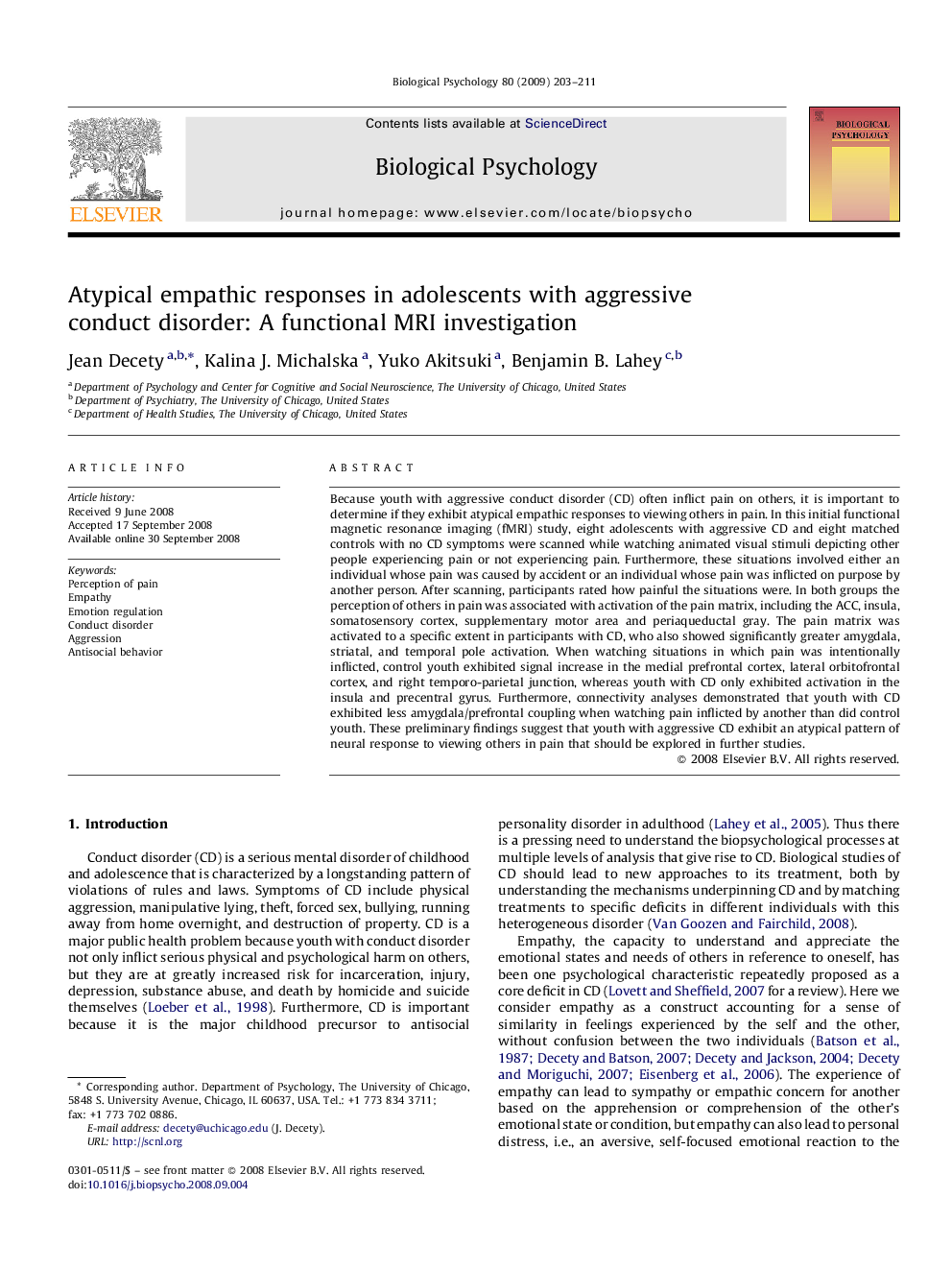| Article ID | Journal | Published Year | Pages | File Type |
|---|---|---|---|---|
| 921499 | Biological Psychology | 2009 | 9 Pages |
Because youth with aggressive conduct disorder (CD) often inflict pain on others, it is important to determine if they exhibit atypical empathic responses to viewing others in pain. In this initial functional magnetic resonance imaging (fMRI) study, eight adolescents with aggressive CD and eight matched controls with no CD symptoms were scanned while watching animated visual stimuli depicting other people experiencing pain or not experiencing pain. Furthermore, these situations involved either an individual whose pain was caused by accident or an individual whose pain was inflicted on purpose by another person. After scanning, participants rated how painful the situations were. In both groups the perception of others in pain was associated with activation of the pain matrix, including the ACC, insula, somatosensory cortex, supplementary motor area and periaqueductal gray. The pain matrix was activated to a specific extent in participants with CD, who also showed significantly greater amygdala, striatal, and temporal pole activation. When watching situations in which pain was intentionally inflicted, control youth exhibited signal increase in the medial prefrontal cortex, lateral orbitofrontal cortex, and right temporo-parietal junction, whereas youth with CD only exhibited activation in the insula and precentral gyrus. Furthermore, connectivity analyses demonstrated that youth with CD exhibited less amygdala/prefrontal coupling when watching pain inflicted by another than did control youth. These preliminary findings suggest that youth with aggressive CD exhibit an atypical pattern of neural response to viewing others in pain that should be explored in further studies.
